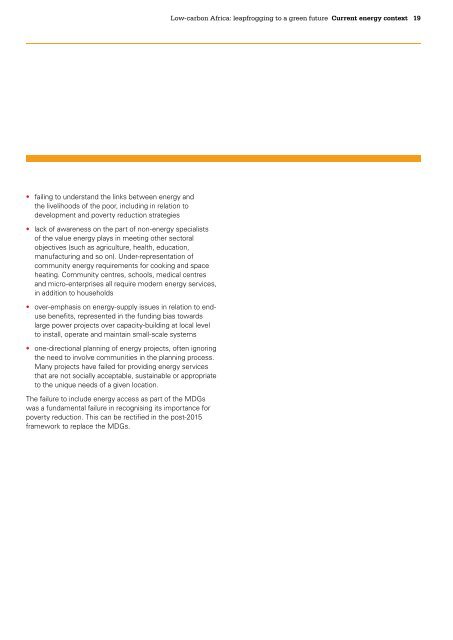Ju8uG
Ju8uG
Ju8uG
You also want an ePaper? Increase the reach of your titles
YUMPU automatically turns print PDFs into web optimized ePapers that Google loves.
Low-carbon Africa: leapfrogging to a green future Current energy context<br />
19<br />
• failing to understand the links between energy and<br />
the livelihoods of the poor, including in relation to<br />
development and poverty reduction strategies<br />
• lack of awareness on the part of non-energy specialists<br />
of the value energy plays in meeting other sectoral<br />
objectives (such as agriculture, health, education,<br />
manufacturing and so on). Under-representation of<br />
community energy requirements for cooking and space<br />
heating. Community centres, schools, medical centres<br />
and micro-enterprises all require modern energy services,<br />
in addition to households<br />
• over-emphasis on energy-supply issues in relation to enduse<br />
benefits, represented in the funding bias towards<br />
large power projects over capacity-building at local level<br />
to install, operate and maintain small-scale systems<br />
• one-directional planning of energy projects, often ignoring<br />
the need to involve communities in the planning process.<br />
Many projects have failed for providing energy services<br />
that are not socially acceptable, sustainable or appropriate<br />
to the unique needs of a given location.<br />
The failure to include energy access as part of the MDGs<br />
was a fundamental failure in recognising its importance for<br />
poverty reduction. This can be rectified in the post-2015<br />
framework to replace the MDGs.


